Abdullah Al Mamun
Graduate Student, Glenn Department of Civil Engineering, Clemson University
SingRef6D: Monocular Novel Object Pose Estimation with a Single RGB Reference
Sep 26, 2025Abstract:Recent 6D pose estimation methods demonstrate notable performance but still face some practical limitations. For instance, many of them rely heavily on sensor depth, which may fail with challenging surface conditions, such as transparent or highly reflective materials. In the meantime, RGB-based solutions provide less robust matching performance in low-light and texture-less scenes due to the lack of geometry information. Motivated by these, we propose SingRef6D, a lightweight pipeline requiring only a single RGB image as a reference, eliminating the need for costly depth sensors, multi-view image acquisition, or training view synthesis models and neural fields. This enables SingRef6D to remain robust and capable even under resource-limited settings where depth or dense templates are unavailable. Our framework incorporates two key innovations. First, we propose a token-scaler-based fine-tuning mechanism with a novel optimization loss on top of Depth-Anything v2 to enhance its ability to predict accurate depth, even for challenging surfaces. Our results show a 14.41% improvement (in $\delta_{1.05}$) on REAL275 depth prediction compared to Depth-Anything v2 (with fine-tuned head). Second, benefiting from depth availability, we introduce a depth-aware matching process that effectively integrates spatial relationships within LoFTR, enabling our system to handle matching for challenging materials and lighting conditions. Evaluations of pose estimation on the REAL275, ClearPose, and Toyota-Light datasets show that our approach surpasses state-of-the-art methods, achieving a 6.1% improvement in average recall.
Optimizing Deep Learning for Skin Cancer Classification: A Computationally Efficient CNN with Minimal Accuracy Trade-Off
May 27, 2025Abstract:The rapid advancement of deep learning in medical image analysis has greatly enhanced the accuracy of skin cancer classification. However, current state-of-the-art models, especially those based on transfer learning like ResNet50, come with significant computational overhead, rendering them impractical for deployment in resource-constrained environments. This study proposes a custom CNN model that achieves a 96.7\% reduction in parameters (from 23.9 million in ResNet50 to 692,000) while maintaining a classification accuracy deviation of less than 0.022\%. Our empirical analysis of the HAM10000 dataset reveals that although transfer learning models provide a marginal accuracy improvement of approximately 0.022\%, they result in a staggering 13,216.76\% increase in FLOPs, considerably raising computational costs and inference latency. In contrast, our lightweight CNN architecture, which encompasses only 30.04 million FLOPs compared to ResNet50's 4.00 billion, significantly reduces energy consumption, memory footprint, and inference time. These findings underscore the trade-off between the complexity of deep models and their real-world feasibility, positioning our optimized CNN as a practical solution for mobile and edge-based skin cancer diagnostics.
Crash Severity Risk Modeling Strategies under Data Imbalance
Dec 03, 2024



Abstract:This study investigates crash severity risk modeling strategies for work zones involving large vehicles (i.e., trucks, buses, and vans) when there are crash data imbalance between low-severity (LS) and high-severity (HS) crashes. We utilized crash data, involving large vehicles in South Carolina work zones for the period between 2014 and 2018, which included 4 times more LS crashes compared to HS crashes. The objective of this study is to explore crash severity prediction performance of various models under different feature selection and data balancing techniques. The findings of this study highlight a disparity between LS and HS predictions, with less-accurate prediction of HS crashes compared to LS crashes due to class imbalance and feature overlaps between LS and HS crashes. Combining features from multiple feature selection techniques: statistical correlation, feature importance, recursive elimination, statistical tests, and mutual information, slightly improves HS crash prediction performance. Data balancing techniques such as NearMiss-1 and RandomUnderSampler, maximize HS recall when paired with certain prediction models, such as Bayesian Mixed Logit (BML), NeuralNet, and RandomForest, making them suitable for HS crash prediction. Conversely, RandomOverSampler, HS Class Weighting, and Kernel-based Synthetic Minority Oversampling (K-SMOTE), used with certain prediction models such as BML, CatBoost, and LightGBM, achieve a balanced performance, defined as achieving an equitable trade-off between LS and HS prediction performance metrics. These insights provide safety analysts with guidance to select models, feature selection techniques, and data balancing techniques that align with their specific safety objectives, offering a robust foundation for enhancing work-zone crash severity prediction.
Few-Shot Point Cloud Semantic Segmentation via Contrastive Self-Supervision and Multi-Resolution Attention
Feb 21, 2023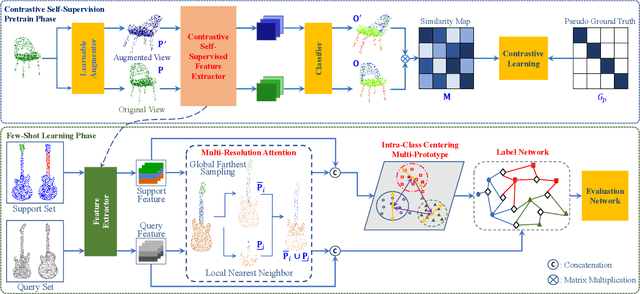
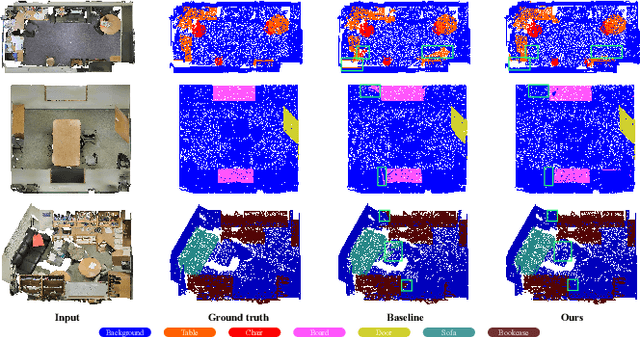
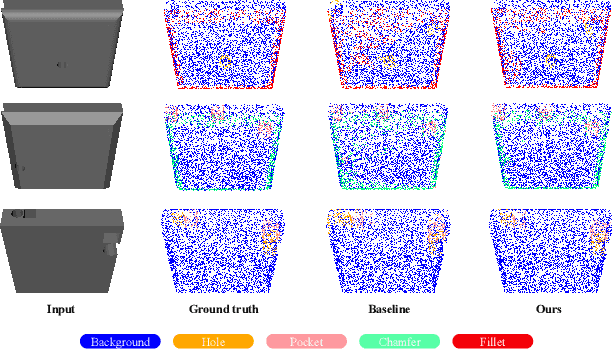

Abstract:This paper presents an effective few-shot point cloud semantic segmentation approach for real-world applications. Existing few-shot segmentation methods on point cloud heavily rely on the fully-supervised pretrain with large annotated datasets, which causes the learned feature extraction bias to those pretrained classes. However, as the purpose of few-shot learning is to handle unknown/unseen classes, such class-specific feature extraction in pretrain is not ideal to generalize into new classes for few-shot learning. Moreover, point cloud datasets hardly have a large number of classes due to the annotation difficulty. To address these issues, we propose a contrastive self-supervision framework for few-shot learning pretrain, which aims to eliminate the feature extraction bias through class-agnostic contrastive supervision. Specifically, we implement a novel contrastive learning approach with a learnable augmentor for a 3D point cloud to achieve point-wise differentiation, so that to enhance the pretrain with managed overfitting through the self-supervision. Furthermore, we develop a multi-resolution attention module using both the nearest and farthest points to extract the local and global point information more effectively, and a center-concentrated multi-prototype is adopted to mitigate the intra-class sparsity. Comprehensive experiments are conducted to evaluate the proposed approach, which shows our approach achieves state-of-the-art performance. Moreover, a case study on practical CAM/CAD segmentation is presented to demonstrate the effectiveness of our approach for real-world applications.
CAM/CAD Point Cloud Part Segmentation via Few-Shot Learning
Jul 16, 2022
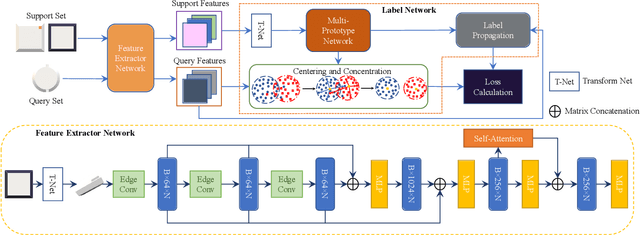


Abstract:3D part segmentation is an essential step in advanced CAM/CAD workflow. Precise 3D segmentation contributes to lower defective rate of work-pieces produced by the manufacturing equipment (such as computer controlled CNCs), thereby improving work efficiency and attaining the attendant economic benefits. A large class of existing works on 3D model segmentation are mostly based on fully-supervised learning, which trains the AI models with large, annotated datasets. However, the disadvantage is that the resulting models from the fully-supervised learning methodology are highly reliant on the completeness of the available dataset, and its generalization ability is relatively poor to new unknown segmentation types (i.e. further additional novel classes). In this work, we propose and develop a noteworthy few-shot learning-based approach for effective part segmentation in CAM/CAD; and this is designed to significantly enhance its generalization ability and flexibly adapt to new segmentation tasks by using only relatively rather few samples. As a result, it not only reduces the requirements for the usually unattainable and exhaustive completeness of supervision datasets, but also improves the flexibility for real-world applications. As further improvement and innovation, we additionally adopt the transform net and the center loss block in the network. These characteristics serve to improve the comprehension for 3D features of the various possible instances of the whole work-piece and ensure the close distribution of the same class in feature space.
R2: Heuristic Bug-Based Any-angle Path-Planning using Lazy Searches
Jun 28, 2022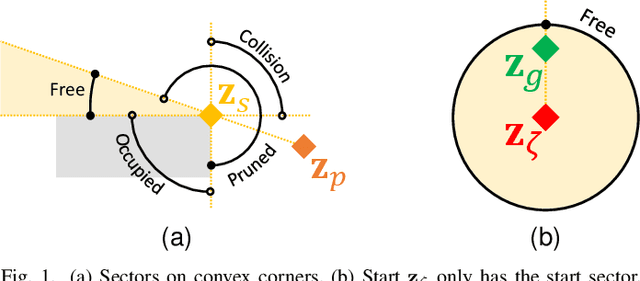

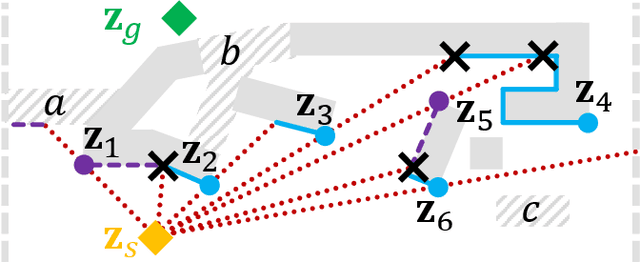
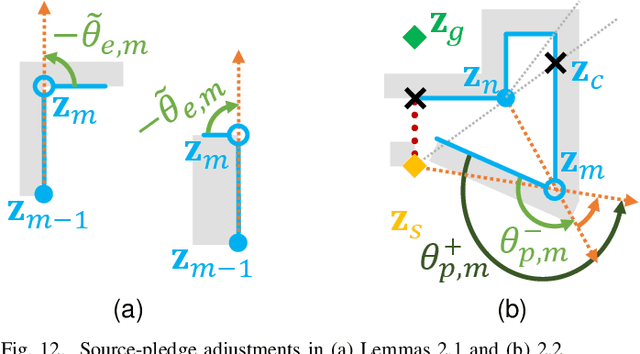
Abstract:R2 is a novel online any-angle path planner that uses heuristic bug-based or ray casting approaches to find optimal paths in 2D maps with non-convex, polygonal obstacles. R2 is competitive to traditional free-space planners, finding paths quickly if queries have direct line-of-sight. On large sparse maps with few obstacle contours, which are likely to occur in practice, R2 outperforms free-space planners, and can be much faster than state-of-the-art free-space expansion planner Anya. On maps with many contours, Anya performs faster than R2. R2 is built on RayScan, introducing lazy-searches and a source-pledge counter to find successors optimistically on contiguous contours. The novel approach bypasses most successors on jagged contours to reduce expensive line-of-sight checks, therefore requiring no pre-processing to be a competitive online any-angle planner.
Generalized Iterative Super-Twisting Sliding Mode Control: A Case Study on Flexure-Joint Dual-Drive H-Gantry Stage
Mar 23, 2021
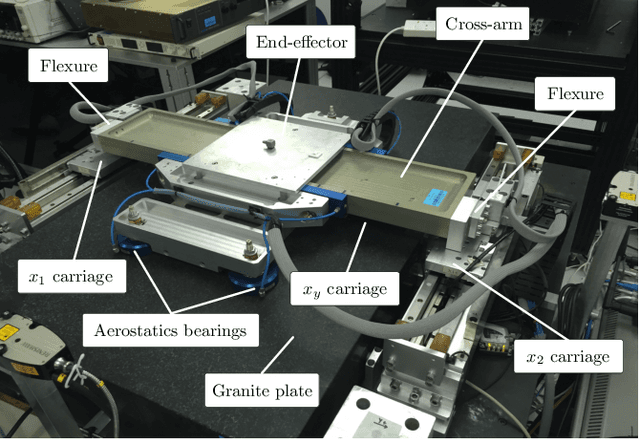
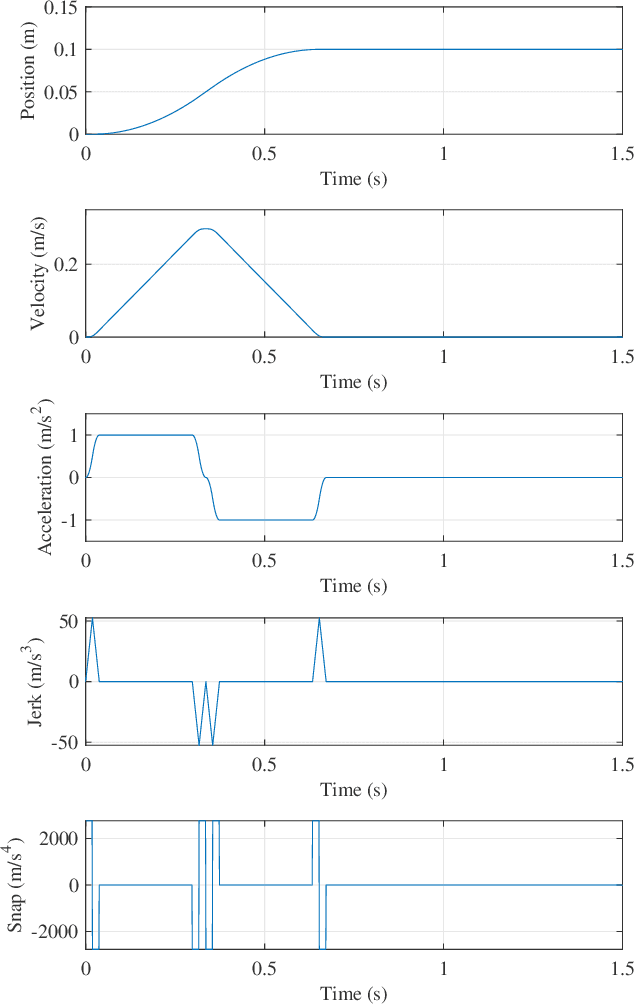

Abstract:Mechatronic systems are commonly used in the industry, where fast and accurate motion performance is always required to guarantee manufacturing precision and efficiency. Nevertheless, the system model and parameters are difficult to be obtained accurately. Moreover, the high-order modes, strong coupling in the multi-axis systems, or unmodeled frictions will bring uncertain dynamics to the system. To overcome the above-mentioned issues and enhance the motion performance, this paper introduces a novel intelligent and totally model-free control method for mechatronic systems with unknown dynamics. In detail, a 2-degree-of-freedom (DOF) architecture is designed, which organically merges a generalized super-twisting algorithm with a unique iterative learning law. The controller solely utilizes the input-output data collected in iterations such that it works without any knowledge of the system parameters. The rigorous proof of convergence ability is given and a case study on flexture-joint dual-drive H-gantry stage is shown to validate the effectiveness of the proposed method.
Data-Driven Predictive Control for Multi-Agent Decision Making With Chance Constraints
Nov 06, 2020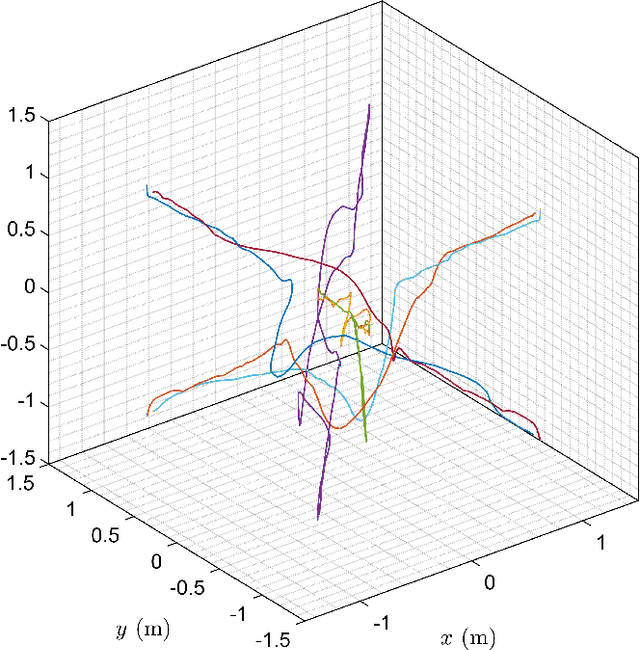


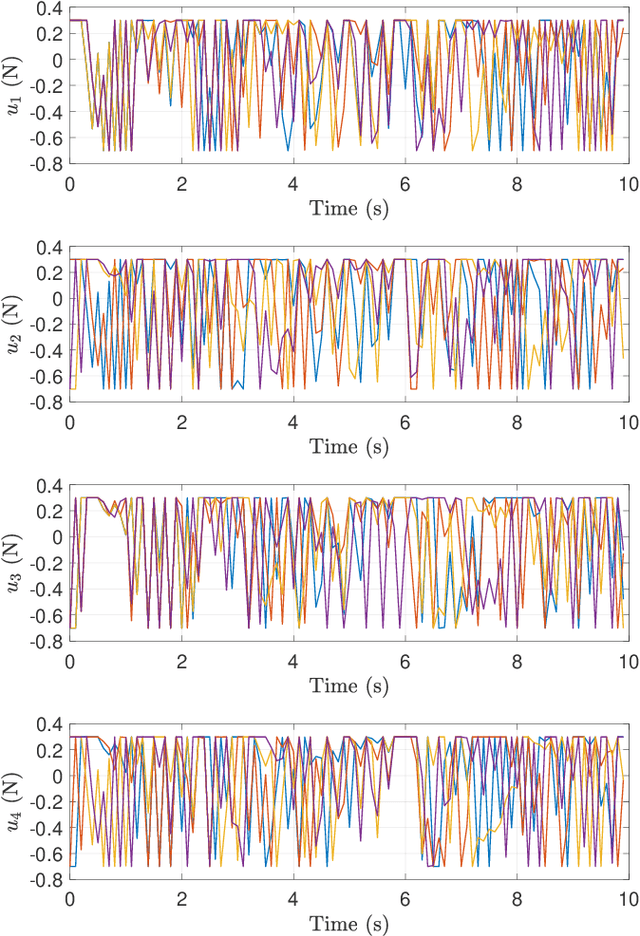
Abstract:In the recent literature, significant and substantial efforts have been dedicated to the important area of multi-agent decision-making problems. Particularly here, the model predictive control (MPC) methodology has demonstrated its effectiveness in various applications, such as mobile robots, unmanned vehicles, and drones. Nevertheless, in many specific scenarios involving the MPC methodology, accurate and effective system identification is a commonly encountered challenge. As a consequence, the overall system performance could be significantly weakened in outcome when the traditional MPC algorithm is adopted under such circumstances. To cater to this rather major shortcoming, this paper investigates an alternate data-driven approach to solve the multi-agent decision-making problem. Utilizing an innovative modified methodology with suitable closed-loop input/output measurements that comply with the appropriate persistency of excitation condition, a non-parametric predictive model is suitably constructed. This non-parametric predictive model approach in the work here attains the key advantage of alleviating the rather heavy computational burden encountered in the optimization procedures typical in alternative methodologies requiring open-loop input/output measurement data collection and parametric system identification. Then with a conservative approximation of probabilistic chance constraints for the MPC problem, a resulting deterministic optimization problem is formulated and solved efficiently and effectively. In the work here, this intuitive data-driven approach is also shown to preserve good robustness properties. Finally, a multi-drone system is used to demonstrate the practical appeal and highly effective outcome of this promising development in achieving very good system performance.
Detecting Parkinson's Disease from Speech-task in an accessible and interpretable manner
Sep 02, 2020



Abstract:Every nine minutes a person is diagnosed with Parkinson's Disease (PD) in the United States. However, studies have shown that between 25 and 80\% of individuals with Parkinson's Disease (PD) remain undiagnosed. An online, in the wild audio recording application has the potential to help screen for the disease if risk can be accurately assessed. In this paper, we collect data from 726 unique subjects (262 PD and 464 Non-PD) uttering the "quick brown fox jumps over the lazy dog ...." to conduct automated PD assessment. We extracted both standard acoustic features and deep learning based embedding features from the speech data and trained several machine learning algorithms on them. Our models achieved 0.75 AUC by modeling the standard acoustic features through the XGBoost model. We also provide explanation behind our model's decision and show that it is focusing mostly on the widely used MFCC features and a subset of dysphonia features previously used for detecting PD from verbal phonation task.
Edge and Corner Detection for Unorganized 3D Point Clouds with Application to Robotic Welding
Sep 27, 2018



Abstract:In this paper, we propose novel edge and corner detection algorithms for unorganized point clouds. Our edge detection method evaluates symmetry in a local neighborhood and uses an adaptive density based threshold to differentiate 3D edge points. We extend this algorithm to propose a novel corner detector that clusters curvature vectors and uses their geometrical statistics to classify a point as corner. We perform rigorous evaluation of the algorithms on RGB-D semantic segmentation and 3D washer models from the ShapeNet dataset and report higher precision and recall scores. Finally, we also demonstrate how our edge and corner detectors can be used as a novel approach towards automatic weld seam detection for robotic welding. We propose to generate weld seams directly from a point cloud as opposed to using 3D models for offline planning of welding paths. For this application, we show a comparison between Harris 3D and our proposed approach on a panel workpiece.
 Add to Chrome
Add to Chrome Add to Firefox
Add to Firefox Add to Edge
Add to Edge